Balcony fencing: varieties and recommendations for choosing
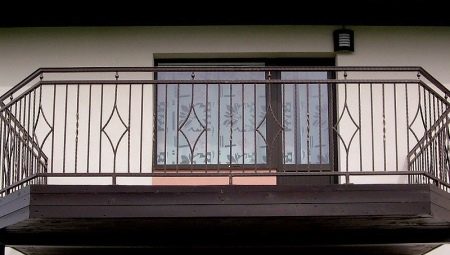
The balcony railing is not just an important functional element, but also a part of the building facade, which, if desired, can be decorated in completely different styles. Modern metal balcony railings and glass balconies go well with minimalist architecture. Wooden fences are suitable for loft or country-style suburban housing projects. Other options - forging, plastic - allow you to harmoniously fit the balcony into the urban landscape and do not look too pretentious.
Railing is a full-fledged part of an open balcony. It allows for safety, but it can also become the centerpiece of the entire composition. The final appearance of the recreation area equipped here largely depends on which fence is chosen. It is not surprising that special requirements are imposed on the choice of balcony decoration in private houses and modern city apartments.
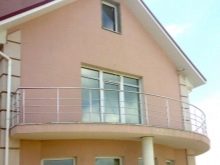

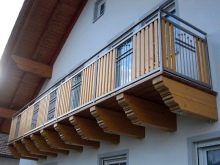
What is a railing for?
The purpose of the balcony railings is beyond doubt: this element is primarily intended to ensure the safety of people on the balcony. The metal frame of the fence is capable of supporting the weight of an adult and is created according to certain standards. But besides the upper border with the handrail, the balcony railing has both a front part and sidewalls.
A country house or country house allows you to give a mini-terrace almost any shape, let it run along the entire perimeter or extend it in the form of a ledge above the porch.

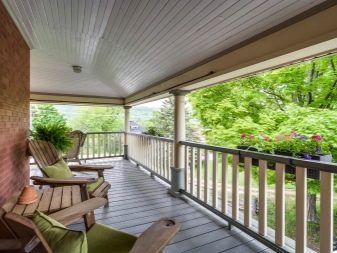
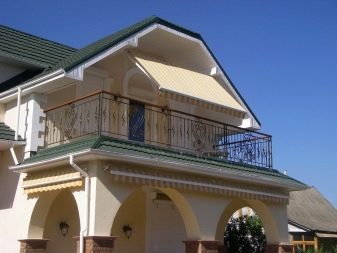
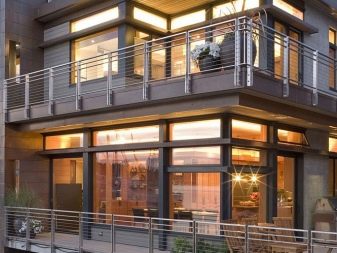
Railings also play a huge role in the design of the facade of the building. It is enough to take the most famous architectural monuments as a basis and compare them with the variegated design of modern multi-storey buildings. In suburban housing construction, great importance is attached to the design of balcony groups. After all, even the style of the parapet can emphasize the grace of the lines or become an expressive detail that adorns the classic facade. In urban housing, it is better to focus on the architecture of the building when decorating a balcony, then it will not look alien.
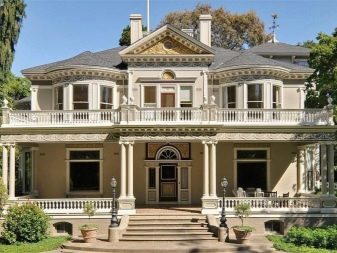
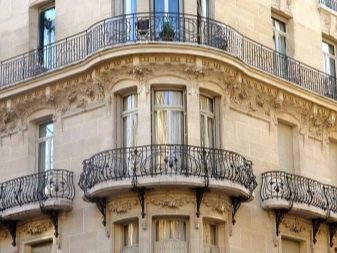

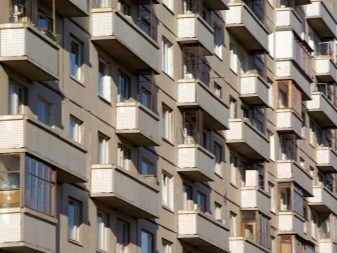
General requirements
Basic requirements for the choice of railings for balconies and loggias regulated by the main construction document - SNiP. They determine what the handrail (parapet) will be, but mainly relate to multi-storey residential buildings made of monolith, concrete slabs, bricks. The structures themselves, according to the requirements, must necessarily have a metal frame. But all these requirements are only advisory in nature if a project is being created for fencing a balcony in a private country house.
The height parameters of the balcony railing are determined by the established requirements of GOST. It uses a calculation formula related to the main characteristics of the building itself. For multi-storey buildings up to 30 m in height, the distance to the horizontal crossbeam of the railing from the floor should be 1 m in residential buildings and from 1.2 m in the territory of child care facilities.

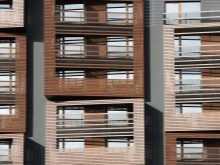
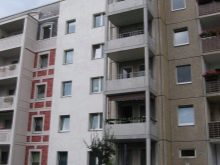
For terraces, their own standards apply. Raised from the ground to a level of more than 60 cm, they are surrounded by a fence with a height of 1 m, it is recommended to install a parapet with a height of 1.07-1.2 m at the level of the 2nd floor. The same requirements apply to loggias.
When installing a wrought iron or timber lattice fence, it is important to maintain a safe distance between its vertical members. It is 12 cm.
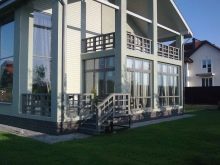
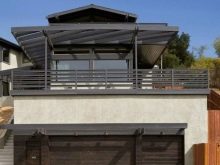
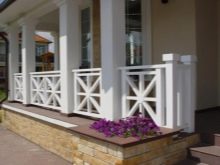
There are a number of prerequisites to be aware of.
- Accurate calculation of loads. The maximum permissible indicators are considered to be 100 kg per linear meter of the fence. If glazing is installed on the balcony, its parapet must be strengthened taking into account the increased load. Ideally, it is worth initially laying in the characteristics of the balcony railing all possible loads with a margin.
- Reliable fastening. It should be double - to the base and to the walls of the building.
- Mandatory strengthening of connections at potentially dangerous or weak points.
- Non-traumatic design... The presence of spiers, peaks, and other pointed elements in the fence is excluded. At the bottom, the gap between the base and the edge of the parapet should be less than the distance that allows a child or pet to get stuck.
These points must be taken into account when designing a structure and choosing the correct and reliable fencing for it.
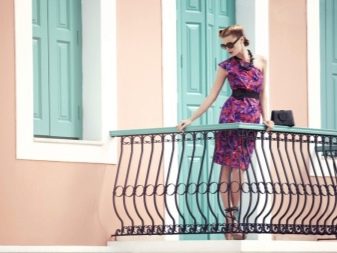
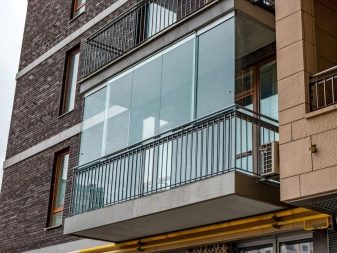
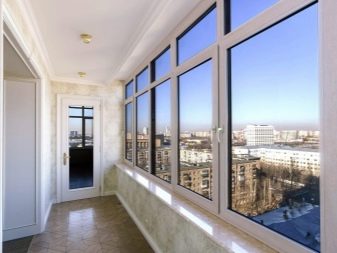

Species overview
All balcony railings can be categorized according to the following parameters:
- material type;
- design features;
- type of installation.
It is worth considering all the important points in as much detail as possible even before the final decision on the decorative design of the railings and parapet is made. Otherwise, there is a great risk that expectations will not coincide with real results.
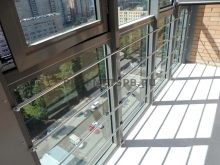
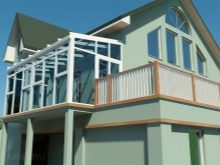
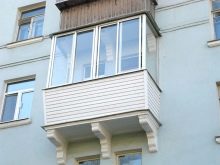
By design features, the following types of balconies are distinguished.
- Screen. They consist of vertical supports on which a solid screen made of plastic, metal, glass is fixed.

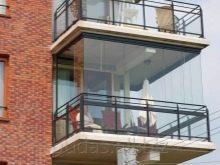
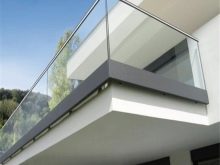
- Lattice. Instead of a solid screen, they use lattice elements located parallel to each other or presented in the form of a fantasy decor with an arbitrary ornament.

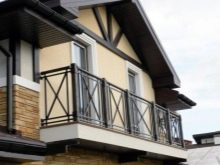

- Combined. The most popular because they are suitable for the implementation of various design ideas. As a rule, several materials are connected at once or the lattice sections are replaced by screen ones. Different types of metals can also be combined, for example, lightweight aluminum with stainless steel. The result of the work should be the formation of a reliable and durable barrier between the street and the house.
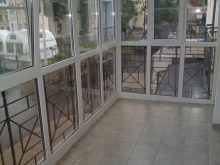
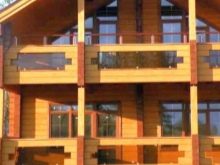

Balcony railings may differ in the type of materials used. They are divided into the following categories.
Metal
Metal balcony railing is the best solution for an urban environment. The simplest and most laconic options are made of stainless steel or from the usual chrome-plated, polished. The advantages of a metal structure are obvious:
- strength;
- practicality;
- durability;
- compliance.
In cold glazing, an aluminum frame is also used, and other types of railings usually have a metal base.
Forging is used in the manufacture of decorative, designer fences. Welded, chrome-plated structures are used in high-tech style.
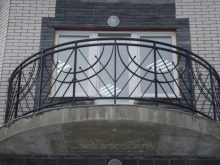
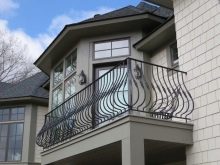
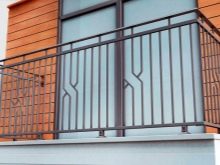
Glass
Exquisite glass railing is most often associated with business centers and elite class houses. In a residential area, such solutions are rare, but on the upper floors of buildings they are quite appropriate. Glass railing can be combined with a metal frame and grille. In the design of such balcony groups, a special material of increased thickness with a protective film, similar to those used in cars, is usually used.
Glass railings can be tinted or transparent, they always look expensive and respectable. But due to their high weight and overall massiveness, they need a solid foundation. The best solution would be to arrange a loggia with such material.
On closed balconies, glass is used as a design element providing a panoramic view.
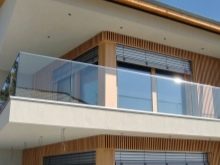


Wood
The eternal classics of suburban housing construction is a wooden balcony railing. This material looks solid and respectable; you can choose various design options. The wooden structure of balusters and railings can be carved or simple, have various configuration options - from round to polygonal. A combined solution with a metal frame is often used to increase the durability of the structure.
Among the obvious advantages of a wooden balcony parapet are:
- ease of installation;
- environmental friendliness;
- mechanical strength;
- unlimited range of design options;
- attractiveness of the material.
Wooden fences also have significant drawbacks.
This option requires the mandatory use of protective paints and varnishes, oil or chemical impregnations. Processing will have to be carried out annually, otherwise it will be quite difficult to maintain the external attractiveness of the railings.
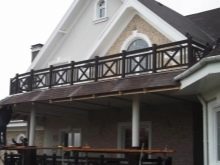
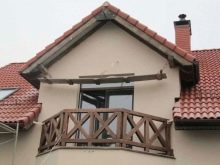
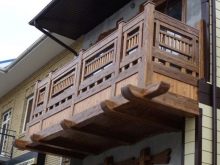
Plastic
Plastic balconies visually resemble glass ones, but they are made of polycarbonate, plexiglass or other materials with high levels of light transmission. Among the advantages of this solution are:
- modern design;
- affordable cost;
- low weight of the fence.
The disadvantages include not too high strength and a change in the characteristics of the plastic when exposed to cold. In addition, these materials are flammable.
Plastic balcony railing made of cellular polycarbonate provides sufficient privacy for people on the balcony. But in order for the fence to serve for a long time, you will have to choose the most massive sheets with a thickness of 10 mm or more. Thinner ones will simply become unusable after a few winter seasons, they may crack in the cold or lose their aesthetics. You should not choose color options - such a frame looks too cheap, transparent polycarbonate or plexiglass is much more reliable.
Due to the low weight and low strength of plastic barriers, it is recommended to combine them with an internal lattice screen when installing. It will create additional support, ensure the appearance of the necessary stiffeners, and increase the safety of use.


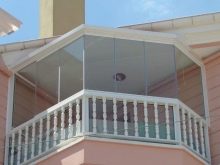
Natural or artificial stone
Stone parapets, railings and balusters are an element of suburban housing construction.Today they are made for terraces and balconies of buildings in classical, Moorish, Neapolitan styles. The luxury of natural marble, the austerity of granite, the variety of colors of artificial casting - all this allows you to design a fence in a completely unique style.
The stone framing of the balcony requires impressive support... As a rule, such structures on the facade are additionally reinforced with columns. In addition, due to the significant weight and characteristics of the material, they require professional installation. It should be noted that this option turns out to be the most durable. Stone railings can last for centuries without loss of strength and aesthetics.

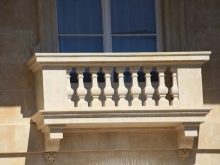
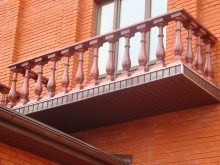
Design options
Among the beautiful design options for balcony railing, one can distinguish original wooden railings that make up a harmonious ensemble with country houses and cottages. With their help, the open terrace of the second floor can turn into a real work of art. An exquisite openwork carving or a laconic geometric pattern in the lattice of the fence always look respectable and can serve as a true decoration of the facade of a building.
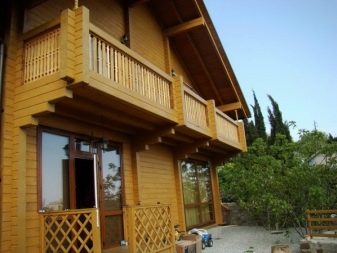
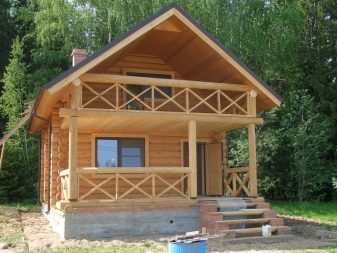
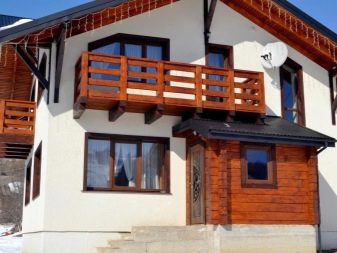
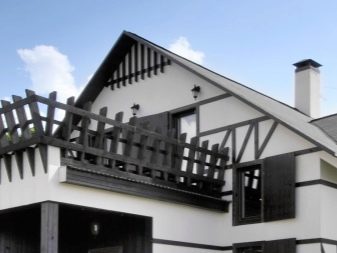
In a city apartment, wooden fences most often look like parallel elements in a horizontal plane. Such framing requires more attention to itself - it must be regularly protected from negative external influences: painted, varnished, impregnated with special stains. Visually, such options fit very harmoniously into the design of balconies in southern cities, overlooking the sea or a beautiful natural landscape.
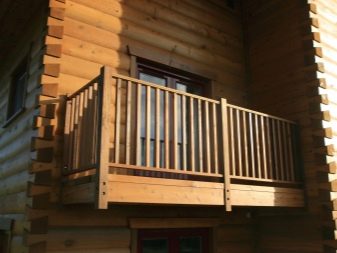
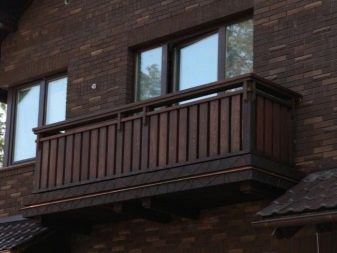
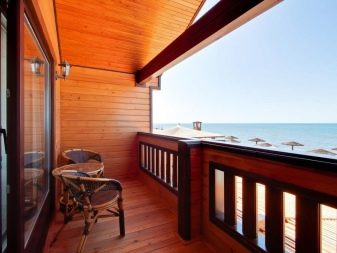
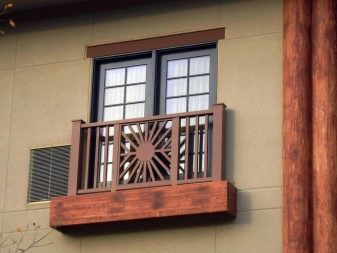
Forged parapets are a real work of art. Craftsmen today offer not only classic twisted ornaments. Floristic motives - leaves, flowers, vines - look very impressive in this design. But on the balcony of a typical multi-storey building, such solutions may seem inappropriate.
It is better to combine wrought iron fences with buildings of historical significance; they look spectacular on the facades of mansions of several floors, in the architecture of the old city center.
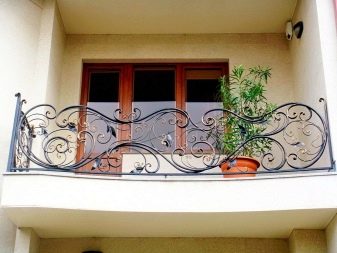
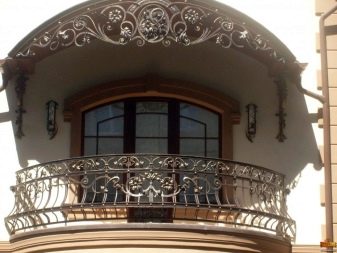
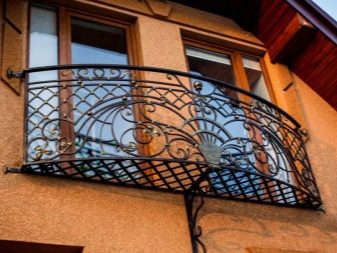
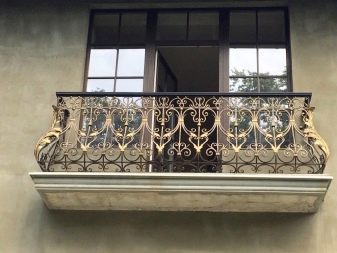
Modern homes and business centers are often clad natural stone or porcelain stoneware. Here, the balcony railing suggests minimalistic design motives. Chrome-plated stainless steel in the form of interconnected vertical posts and fences with horizontal, parallel strips of metal are perfect. Such an ensemble looks strict and quite respectable.
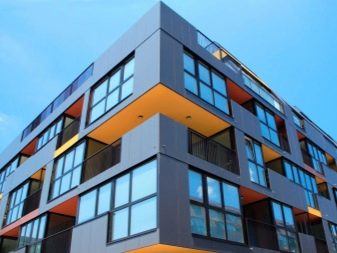

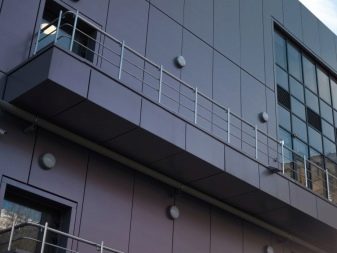
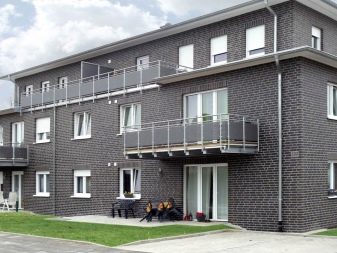
Another interesting design option is glass railing on a chrome-plated metal or solid wooden frame... Glass can be transparent, matte, tinted; in country houses, stained glass looks interesting. Such fences are traditionally made higher than the standard ones. The glass is taken as the thickest, toughest, capable of withstanding intense loads.
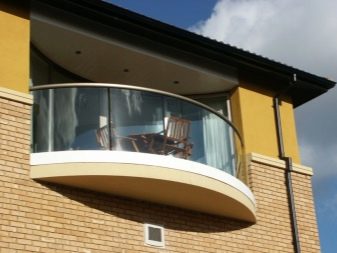
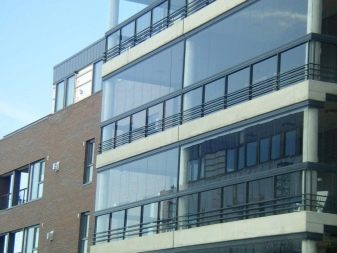
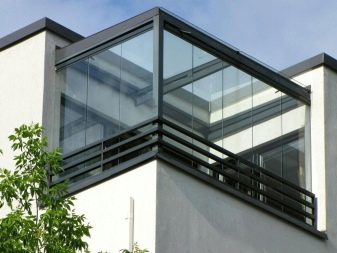
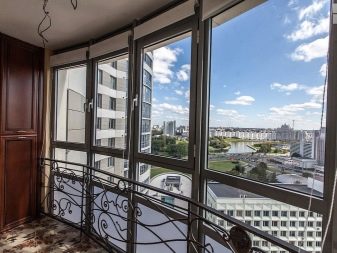
Criterias of choice
The criteria for choosing a railing in a country house or for framing a balcony in a city apartment are generally the same. Ready-made solutions are created mainly for standard buildings. In private housing, it is better to order railings according to an individual project, taking into account important points.
- Reliability of construction. It should not change its characteristics under the influence of weather and temperature changes. Optimally, if ice does not form on the surface, moisture accumulates.
- Security. The main purpose of the handrail is to protect a person from external threats. If the balcony is at a height of 10-20 meters, this factor becomes completely superfluous. The parapet should be of such a height that an adult cannot freely bend over it. Only in this case can we talk about security.
- Strength of materials. No matter how beautiful decorative fences look, you must first of all focus on their service life and the practicality of using the selected solution.
- Aesthetics. The balcony railing should be in harmony with other design elements. This moment is especially important on loggias, where the open part of the building is formed on a common foundation.
- Ability to withstand wind loads... This indicator is especially important for glass and plastic railings. They have a large windage and, with strong gusts, they may simply not be able to withstand the pressure.
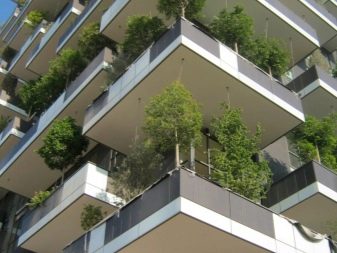
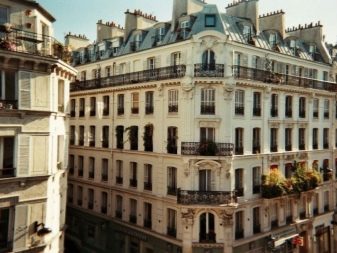
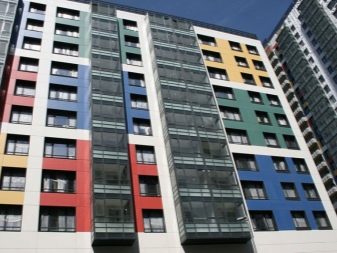
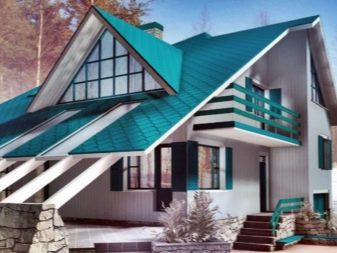
Installation rules and methods
Since almost all options for balconies, except for wooden ones, are mounted on a solid metal frame, it is worth paying attention to the variety of installation methods available to them.
- Welded. They involve the factory fabrication of an all-metal structure using electric arc welding. Such fences are attached to the base of the building and the floor using anchor bolts.
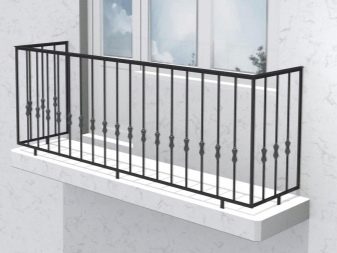
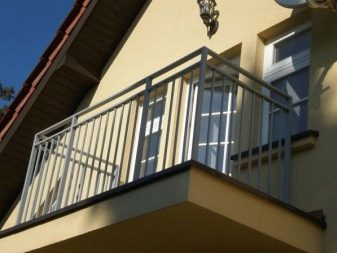
- Prefabricated or composite... This type of construction implies the connection of all parts on site, after delivery of the product. In production, individual modules are manufactured with a reliable groove connection and the necessary stiffeners. First, a frame of vertical racks is mounted, then the rest of the elements are fixed to them.
The fixing of the railings on the balcony is usually done using special embedded elements mounted in the wall of a building or a concrete base plate. According to GOST, the fastening must be double. A final floor is already laid on top of the metal frame, then the remaining elements of the balcony structure are mounted.
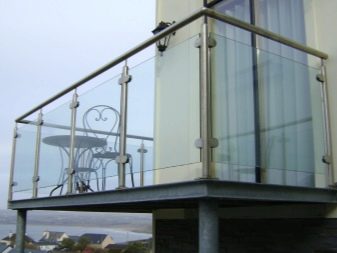
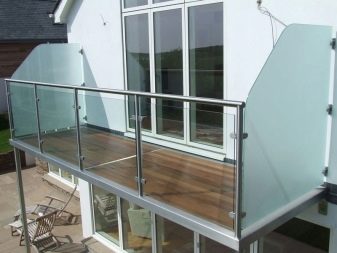
When carrying out installation work it is important to follow certain rules for installing balcony railings. If they are violated, there is a high risk of receiving a fine or a complaint filed with the supervisory authorities. In particular, when performing work in an urban environment, it is imperative to fence off the area, display hazard warning signs or plates.
In most cases in apartment buildings such activities must be approved by the management company. And sometimes it will be possible to change the railings altogether only after a decision is made at the general meeting of residents - this is especially true for buildings included in the list of state-protected property.
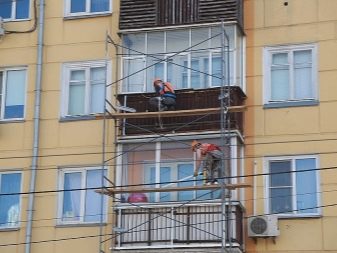

Next, watch a video on how to make and install a wooden balcony and terrace railing.








